Garden pests - Aphids
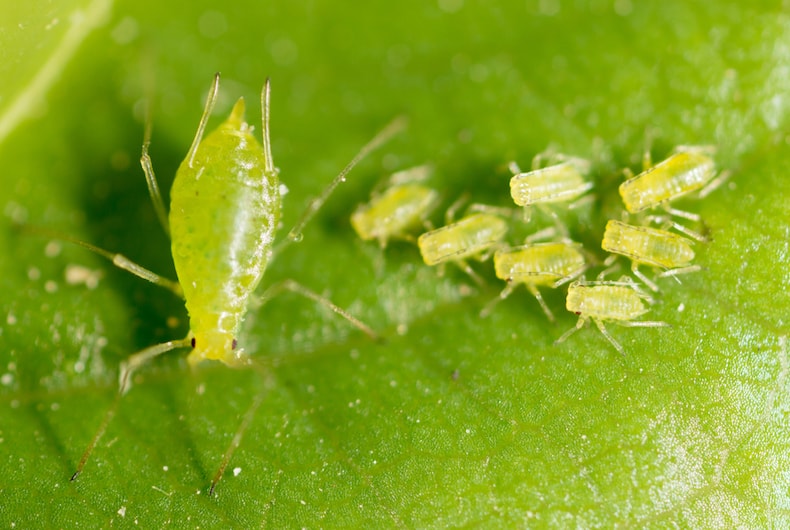
These small insects cause many problems in the garden
Image: schankz/Shutterstock
Aphids might be small, but they can cause a lot of damage to plants and crops. Here’s everything you need to know about recognising and controlling these tiny garden pests.
What are aphids?
Aphids are small, soft-bodied insects that feed on the sap of flower buds, stems and leaves. There are over 500 species of aphid in the UK. They come in a range of different colours - although the most common are green (greenfly) or brown-black (blackfly).
How to recognise aphid damage
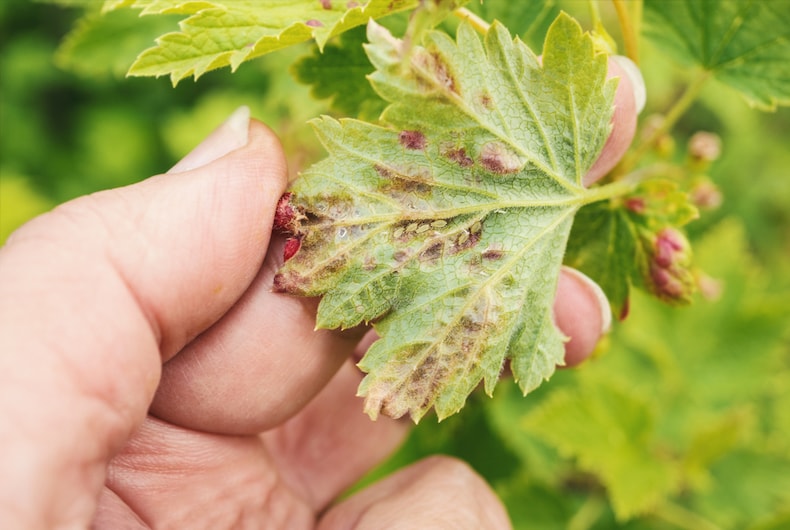
Damage from aphids is easy to spot
Image: Medvedeva Oxana/Shutterstock
You’ll be able to spot aphid colonies around flower buds, the underside of new leaves and shoot tips. If you have an aphid infestation, you may also notice the following:
- Stunted growth, deformed or yellow leaves, or leaf loss - which weakens the plant.
- A sooty black mould formed on the honeydew secreted by the aphids. This prevents the plant from absorbing enough light through its leaves.
- Diseased plants can be the result of infection via aphids. Winged aphids can transmit dozens of viruses as they feed on infected plants and then transfer virus particles via the stylus - a kind of needle they use to pierce and suck sap from the plant. Some of these viruses can affect yields.
What plants do aphids eat?
Some aphids feed on just one or two plant species. Others will eat several different types of plant. Most plants are susceptible to aphid damage - including fruit and vegetables, ornamentals, and houseplants.
How can I control aphids?
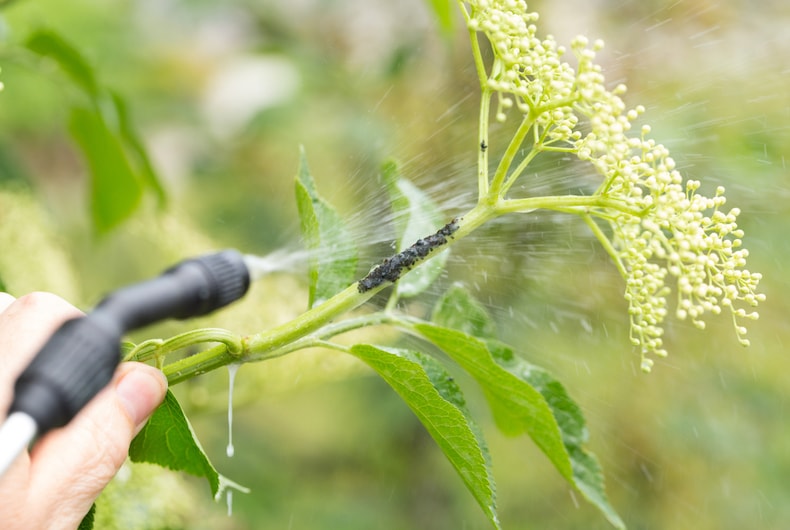
Spray aphids with cold water to dislodge them from plants
Image: lavizzara/Shutterstock
There are several ways to minimise or control aphid infestation. Here are some of the methods you can use:
- Encourage natural predators - aphids have lots of natural enemies including ladybirds, lacewing and hoverfly larvae and parasitic wasps. If you have a greenhouse infestation, you can introduce some of these natural predators into the greenhouse to wipe out the aphid population. In the outdoors, you’ll have to wait until mid summer for aphid-predator populations to reach sufficient numbers to control aphids.
- Cover crops - cover fruit and vegetable crops with insect nets.
- Spray with cold water - spray aphids with cold water to dislodge them from plants.
- Dust plants with flour - some gardeners dust infected plants with flour to constipate the aphids and prevent them from feeding.
- Try companion planting - take advantage of some of the plants that aphids don’t like eating to protect the ones that they do. Aphids dislike catnip and garlic, for instance. You can also enlist sacrificial or ‘trap’ plants - including mustard and nasturtium, which aphids are especially attracted to - to lure aphids away from your prized specimens.
- Use an organic spray - treat infected plants with an organic spray, such as one containing fatty acids. These will kill aphids on contact and can be used on ornamental garden plants and most fruit and vegetables.
Your aphid questions
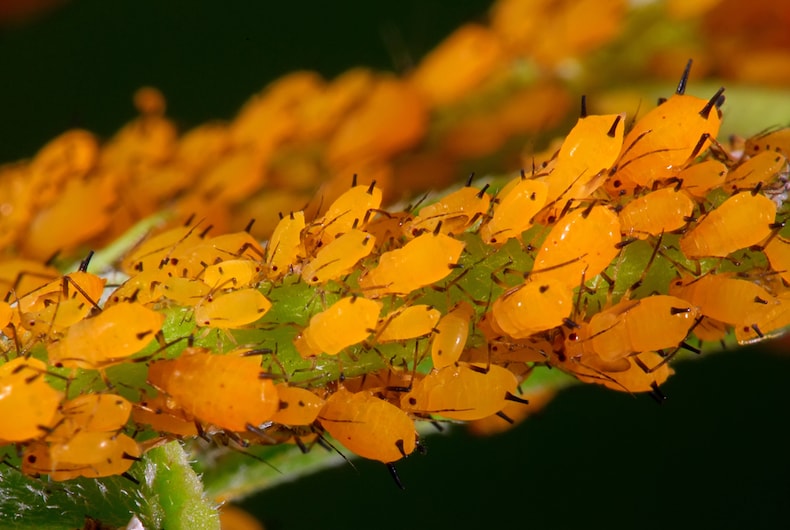
Follow these tips to help with an aphid infestation
Image: Awei/Shutterstock
How do I get rid of aphids on my apple tree?
Remove this year’s apples to give the tree a chance to establish. In winter, use an oil winter wash to remove overwintering aphid eggs. This winter treatment is likely to be most effective at reducing the problem for next year but you will need to be vigilant in spring for a recurrence of the aphid.
If the problem recurs next spring you could try using an organic spray. This has quite a short persistence and works on contact so you will need to be thorough and may have to spray several times throughout the season. However, this spray can be used right up to a day before harvesting which is a great benefit.
How do I control blackfly on my globe artichokes?
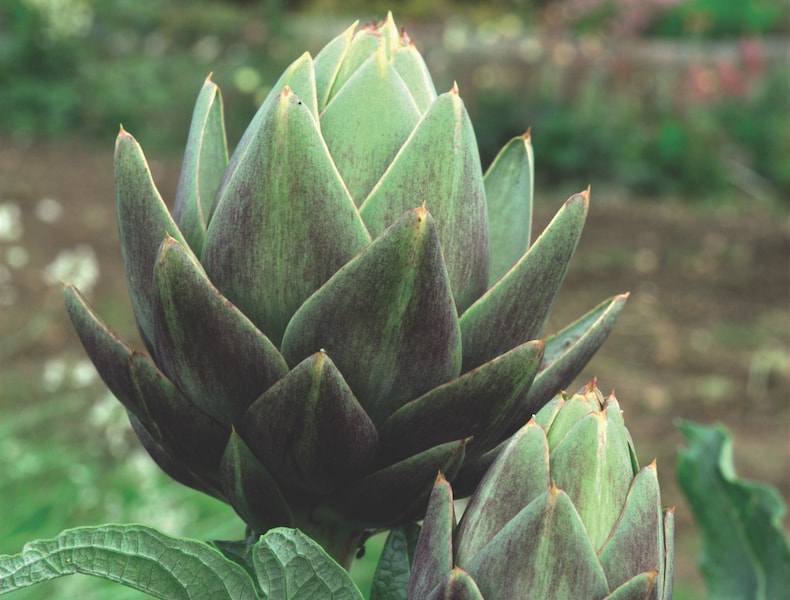
Keep your globe artichokes healthy and free of blackfly
Image: Globe Artichoke 'Green Globe Improved' F1 Hybrid from Thompson & Morgan
Globe Artichokes are prone to blackfly. The most commonly used non-chemical remedy is to spray them with soapy water. You can buy insecticidal soaps but many people make up their own using a teaspoon of washing up liquid diluted in 3 litres of water. The aphids are unable to breath under a coating of soap and subsequently suffocate. If you intend to try this, then be sure to spray on a dull day as spraying in full sun is likely to scorch the foliage.
Other popular methods include squashing groups of them between your finger and thumb or blasting them with a hosepipe to knock them off of the plants, being careful to not damage your plants with the pressure of the water.)
As suggested above, you can try growing other plants as 'lures' that are more attractive to the blackfly than the artichokes. Just make sure that you destroy the blackfly when they appear on your 'lure' plants, otherwise you will just be increasing the local aphid population! You can spray the lure plants with an insecticide as long as you’re not intending to eat them.







